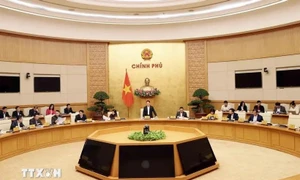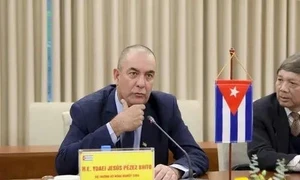According to VNA, under the draft, when the input parameters fluctuate, causing the average retail price of electricity to decrease compared to the current average retail price, Vietnam Electricity (EVN) is responsible for reducing the average retail price of electricity at the corresponding rate, but not lower than the minimum price of the price bracket
It would also reduce the retail price of electricity for each group of electricity users in accordance with current regulations on the structure of the electricity retail tariff.

After the reduction, EVN is responsible for making a report to the MoIT, the Ministry of Finance (MoF) and the State Capital Investment Corporation (SCIC) for inspection and supervision.
In the other case, when the average retail price of electricity increases by 1% to less than 5% compared to the current average retail price and within the price bracket, EVN decides to increase the average retail price of electricity correspondingly and increase the retail price of electricity for each group of electricity users.
After the adjustment, it is responsible for making a report to the MoIT, MoF and SCIC for inspection.
In case the average retail price of electricity increases from 5% to less than 10% compared to the current average retail price and within the price bracket, EVN prepares a dossier of the plan of average retail electricity price and submits it to the MoIT, MoF and SCIC.
The MoIT will assume the prime responsibility for, and coordinate with the MoF and the Committee for Management of State Capital at Enterprises, in inspecting, reviewing and commenting on the average retail electricity price plan submitted by EVN.
Based on the written opinion from the MoIT, EVN will decide to increase the average retail price of electricity and increase the retail price of electricity for each group of users from October 1 of that year.
In case the calculated average retail price of electricity increases by 10% or more compared to the current average retail price of electricity or is outside the price bracket or affects the macro-economic situation, EVN will prepare a dossier of the retail price plan to be submitted to the MoIT, MoF and SCIC.
Then MoIT will assume the prime responsibility for, and coordinate with the MoF and SCIC, in inspecting, reviewing and reporting to the Steering Committee for Price Management before September 1 of that year for the Steering Committee to operate the price for comments.
Since early this year, electricity tariffs have been facing upward pressure when input costs have skyrocketed. For example, the average price of anthracite supplied by Vietnam National Coal-Mineral Industries Holding Corp. (Vinacomin) increased by 63%. The price of imported coal doubled, to 305 USD per tonne while that of Brent crude oil hit 105 USD a barrel, nearly 2.5 times higher than before.
Keeping the power prices unchanged is part of efforts the government has been making to curb inflation and stabilise the macroeconomy this year, said local media.
EVN data said the average retail price of electricity in 2022 has reached 1,915 VND (0.82 USD) per kWh, 2.74% higher than the current average rate applied since 2019, which is 1,844 VND (0.79 USD)/kWh.
According to MoIT, the average retail electricity tariff in Vietnam is adjusted when the input parameters including generation, transmission, distribution, operation, increase by 3% or more.























